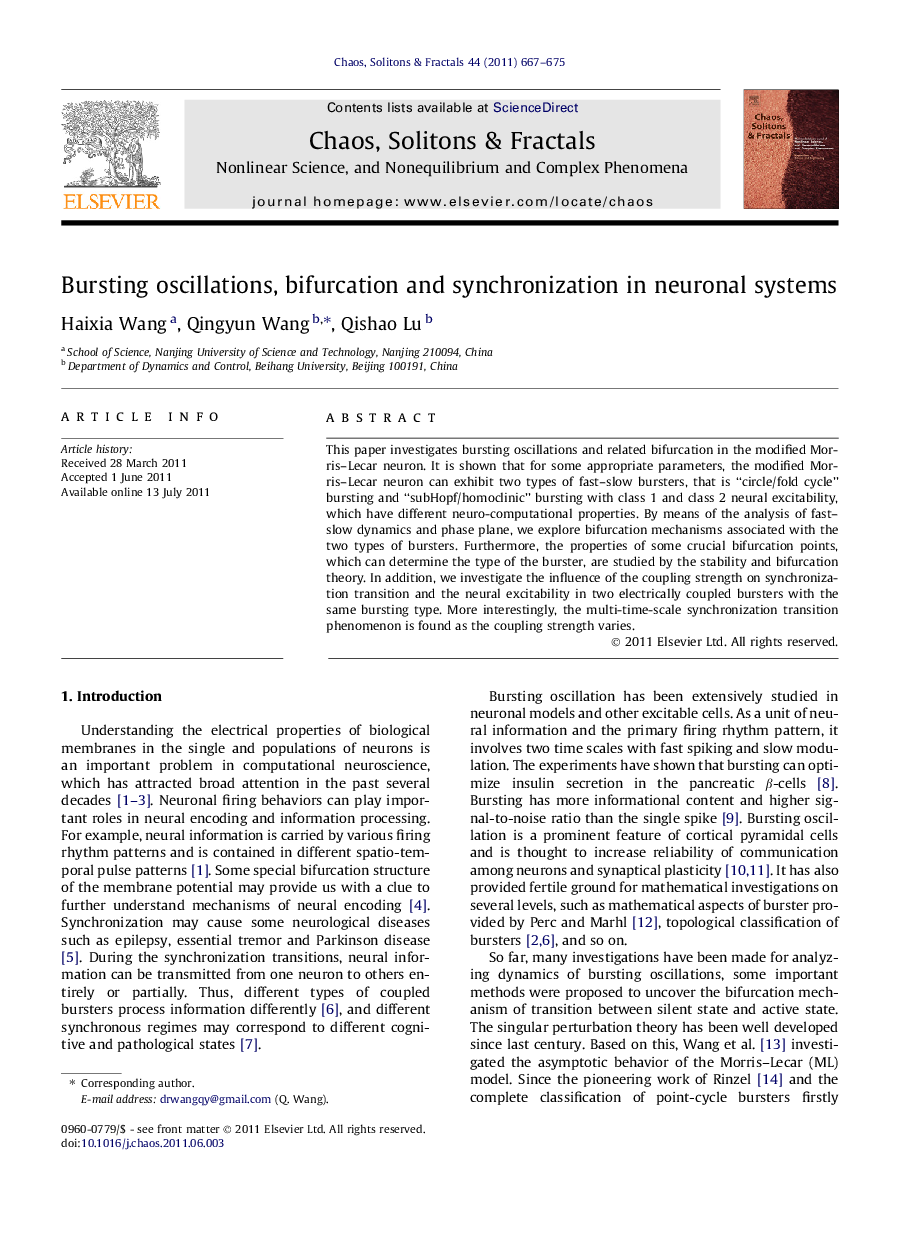| Article ID | Journal | Published Year | Pages | File Type |
|---|---|---|---|---|
| 1889779 | Chaos, Solitons & Fractals | 2011 | 9 Pages |
This paper investigates bursting oscillations and related bifurcation in the modified Morris–Lecar neuron. It is shown that for some appropriate parameters, the modified Morris–Lecar neuron can exhibit two types of fast–slow bursters, that is “circle/fold cycle” bursting and “subHopf/homoclinic” bursting with class 1 and class 2 neural excitability, which have different neuro-computational properties. By means of the analysis of fast–slow dynamics and phase plane, we explore bifurcation mechanisms associated with the two types of bursters. Furthermore, the properties of some crucial bifurcation points, which can determine the type of the burster, are studied by the stability and bifurcation theory. In addition, we investigate the influence of the coupling strength on synchronization transition and the neural excitability in two electrically coupled bursters with the same bursting type. More interestingly, the multi-time-scale synchronization transition phenomenon is found as the coupling strength varies.
► We investigate bursting oscillations and related bifurcation in the modified Morris–Lecar neuron. ► Two types of fast–slow bursters are analyzed in detail. ► We show the properties of some crucial bifurcation points. ► Synchronization transition and the neural excitability are explored in the coupled bursters.
